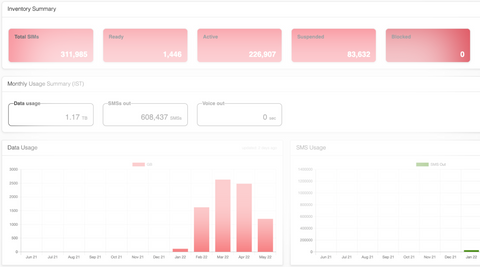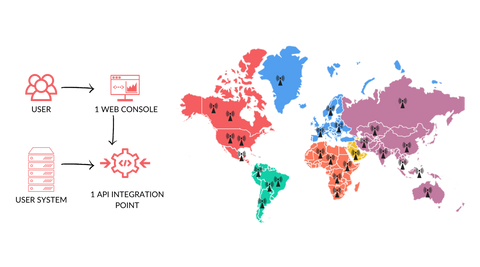
Difference Between Connectivity Management & Connectivity Orchestration
As IoT businesses begin to expand, it becomes increasingly important to assess their connectivity requirements. Connectivity management and/ or orchestration soon becomes a challenge.
What is connectivity management in IoT?
All tasks pertaining to overseeing an enterprise network's daily operations are included in connectivity management, like monitoring device connectivity, device rollout, diagnostics, etc.
What is connectivity orchestration?
Connectivity orchestration automates manual operations like configuration changes of connectivity over devices more intelligently and provides a deeper view of the network status of devices. This can significantly cut down the amount of time needed to manage intricate and large deployments. Let's examine these advantages in more detail. The management of one or more network interactions involving users, devices, and systems is coordinated by connectivity orchestration. It guarantees effectiveness, efficiency, and security.
How to assess business needs?

Your connectivity requirements grow in tandem with your organization's growth and expansion. Connectivity management eventually gets intricate and ineffective. Your expansion budget and service quality are negatively impacted by this intricacy. Enterprise management claims that businesses waste their spending on ineffective setup and maintenance.
95% of network changes are made by hand. As a result, operating expenses can be up to three times greater than network acquisition costs. Up to 80% of network problems are handled manually by network administrators, which goes beyond operating expenses. Stated differently, connectivity management negatively impacts both your operating efficiency and your budget.
The growing expense of network operations is one of the main issues that network managers deal with. The amount of data on your networks increases along with the number of connected devices. Regardless of your sector, network growth eventually becomes too complicated or unmanageable to handle manually.
Introducing ConnectedYou’s IoT Orchestration Hub (IoH)

Using a single "pane of glass," a connectivity orchestration platform's integrated toolkit enables you to automate, manage, configure, troubleshoot, protect, and deploy all of your IoT devices. ConnectedYou’s IoH platform is one of the most economical and effective ways to make changes across a large number of devices quickly as your network gets larger and more complicated. Users can monitor and manage every compatible device across numerous networks from any location with the help of sophisticated cloud-based orchestration features. It has an easy-to-use UI. It helps companies to drastically lower operating expenses, simplify operations, and lower risk. It accomplishes all of this without requiring modifications to your existing workflow management system.
Get in touch today to learn more. Our experts will be happy to help you understand more. Chat now - https://connectedyou.io/pages/for-enterprises
Why ConnectedYou?
Our connectivity solution is universally independent of any connectivity provider. Choose from 40+ pre-integrated connectivity suppliers based on your connectivity requirements across different regions.

We orchestrate the critical components that include - eUICC-enabled SIMs/ eSIMs, global IoT/ M2M connectivity, unified monitoring & management, and remote SIM provisioning capabilities into a single solution as a one-stop-shop. Here’s why our product is the best solution for your enterprise -
- The largest network of 2G, 3G, 4G, 5G, LTE-M, and NB-IoT networks
- Connectivity for countries with permanent roaming restrictions
- Transparent Pay-As-You-Go pricing without hidden charges or minimum commitments
- Single contract enabling hassle-free multi-supplier sourcing without lock-ins with any connectivity provider
- Unified platform to manage your IoT/ M2M SIM cards irrespective of the connectivity supplier
- Capability to switch connectivity suppliers remotely without SIM replacement and without any additional transaction costs
- Central support desk for all connectivity issues
People Also Ask -
Q1. What is the difference between orchestration and automation?
Answer - There are some key distinctions between orchestration and automation as well as commonalities. Automating all network operations and procedures is known as network orchestration. Running a single, managed, or unmonitored task automatically is referred to as automation.
Q2. Difference between connectivity management and orchestration.
Answer - Connectivity management ensures that all of the shared resources, including devices are easily and rapidly accessible to users. The technique of automating behavior across a network, or across several networks, devices, and even multi-vendor systems, is known as connectivity orchestration.
